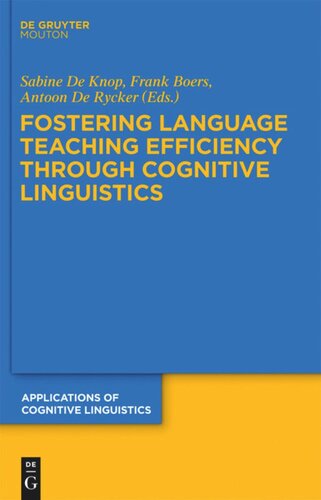

Most ebook files are in PDF format, so you can easily read them using various software such as Foxit Reader or directly on the Google Chrome browser.
Some ebook files are released by publishers in other formats such as .awz, .mobi, .epub, .fb2, etc. You may need to install specific software to read these formats on mobile/PC, such as Calibre.
Please read the tutorial at this link: https://ebookbell.com/faq
We offer FREE conversion to the popular formats you request; however, this may take some time. Therefore, right after payment, please email us, and we will try to provide the service as quickly as possible.
For some exceptional file formats or broken links (if any), please refrain from opening any disputes. Instead, email us first, and we will try to assist within a maximum of 6 hours.
EbookBell Team

4.1
50 reviewsIn contexts of instructed second language acquisition there is a need for teaching methods that are optimally efficient, i.e. teaching interventions that generate a maximal return on learners' and teachers' investment of time and effort. In the past couple of decades, many researchers have argued that insights from Cognitive Linguistics (CL) - when suitably translated for pedagogical purposes - can make a major contribution to fostering such language teaching efficiency. This collective volume assesses and supplements those CL proposals.
The first part of the book positions CL-inspired language pedagogy vis-à-vis recent trends in mainstream applied linguistics and illustrates through several case studies that language-focused instruction (including CL-inspired instruction) is a useful - if not indispensable - complement to learner-autonomous, incidental acquisition. The second part demonstrates how CL research can help pedagogues identify hitherto neglected language elements that merit explicit targeting in second language instruction. The third part consists of contributions that put the pedagogical efficiency of several CL-inspired interventions to the test in classroom experiments. Additions to the currently available armoury of teaching methods are proposed. The kinds of target language items under examination in the book range from single words over multiword units to grammar patterns. Throughout, the volume illustrates how much pedagogy-oriented Cognitive Linguistics has matured in recent years.